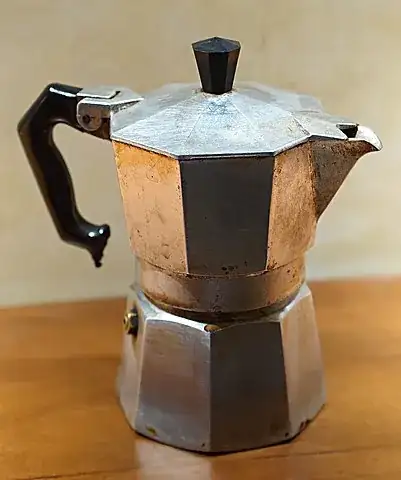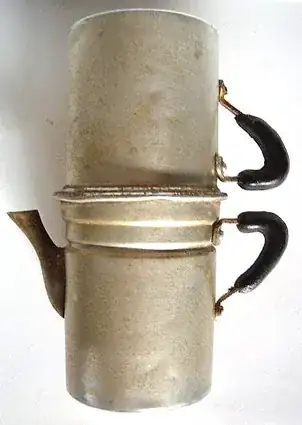If your guests like Italian coffee you can buy a Moka.
This is ubiquitous in Italy, where it is called la macchinetta - the little machine. Every household has one, or often more then one, with different sizes. The classical one is sold by Bialetti, and it looks like this (now they sell more modern-looking one).

Source: Wikipedia
Personally, I don't think the brand really matters so much although, as many Italians, I use Bialetti for sentimental reasons.
The use is very simple:

Source: Wikipedia
- Fill the reservoire (A) with water, up to the level of the safety valve (not shown in the schamatic, but you can see it in the photo)
- Put ground coffee in B. It is important to use espresso-grind, which is fine. Too coarse a grind will not give good coffee
- Screw the top reservoir (C) onto A.
- Put on a stovetop and wait for the water to boil and pass through the coffee powder. The coffee will accumulate in C.
You will hear a typical "gorgling" sound when the coffee is ready, due to the fact that there is no more water left in A.
If you're using a gas stovetop, don't use too strong a flame, otherwise the plastic handle may burn!
Mainteinance is easy: let it cool down, disassemble it, remove the grinds (use them as compost for your acid-loving plants!), and wash it under running water.
Never use soap. Be sure to remove the ground that sticks to the rubber between A and C, otherwise the two parts may not screw well together and coffee may spill out.
Tradition wants that you should not over-wash a moka, as coffee will taste better the more (and more often) you use the moka. Many people would go as far as throw away the first batch from a moka that has not been used for a while (remember, coffee is an after-lunch/dinner ritual in Italy and people will argue about it if it is not good!).
Dry the moka and store disassembled, to increase the life of the rubber band between the two reservoirs.
Moka are cheap and come in different sizes, from 1-cup to 10-12 cups. Of course the number of cups depends on how much you put into each one: Italian coffee is usually served in very small cups and it definitely is not what you get at Starbucks, both regarding volume and taste. It may be served black, with sugar, with a dash of milk (caffè macchiato), with a dash of grappa (caffè corretto) etc.
Note that this is NOT espresso. The moka does not have sufficient pressure to make espresso. This is what is usually drank at home, rather than at the bar, where you would instead get espresso from a high-pressure machine.
As a cultural curiosity: in Napoli, where people really care for their coffee, a variant of the Moka is sometimes used, the macchinetta napoletana, which looks like this:

Source: Il chiodo arrugginito
Apparently this is called Flip-over coffee pot in English, this blog page describes it quite well, and also has a video.
And for those who understand Italian, this scene by one of the best Italian actors of all the times, Eduardo de Filippo, needs to be linked:
Questi fantasmi - coffee scene
As Eduardo says, [making coffee is] the poetry of life.



